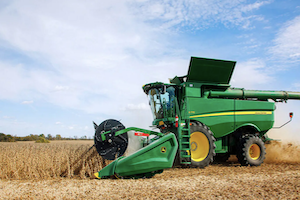Soil salinity is something that agricultural producers must be aware of in Kansas, as noted by K-State researchers. In regions where salt mining occurs, the soil may naturally have high amounts of sodium and soluble salts. Landowners may also be faced with the consequences of drilling activity, which often results in high-salt water contaminating the soil's surface. Understanding the basics of salt-affected soil can give producers insight into how to manage issues that arise.
Saline and sodic soil can significantly reduce the value and productivity of nearby land. Although it often appears throughout Kansas, it is typically isolated to small areas. Field-wide issues develop due to poor-quality irrigation water or an excessive application of manure.
Saline soils are characterized by irregular plant growth, as well as salty white crusts on the surface. Sodic soils are sticky when wet, virtually impermeable to water, and become crusty as they dry. Saline-sodic soils usually have large amounts of total soluble salts and greater than 15% exchangeable sodium.
Producers can identify potential issues by taking a composite sample of multiple cores, six to eight inches deep, in the impacted area. The final sample volume should be at least a pint in size. A lab can run a specific salt-alkali test to determine how much soluble salt, if any, is present on your land.
Questions or concerns surrounding brine spills in the nearby area should be directed to a Kansas Corporation Commission district office.
